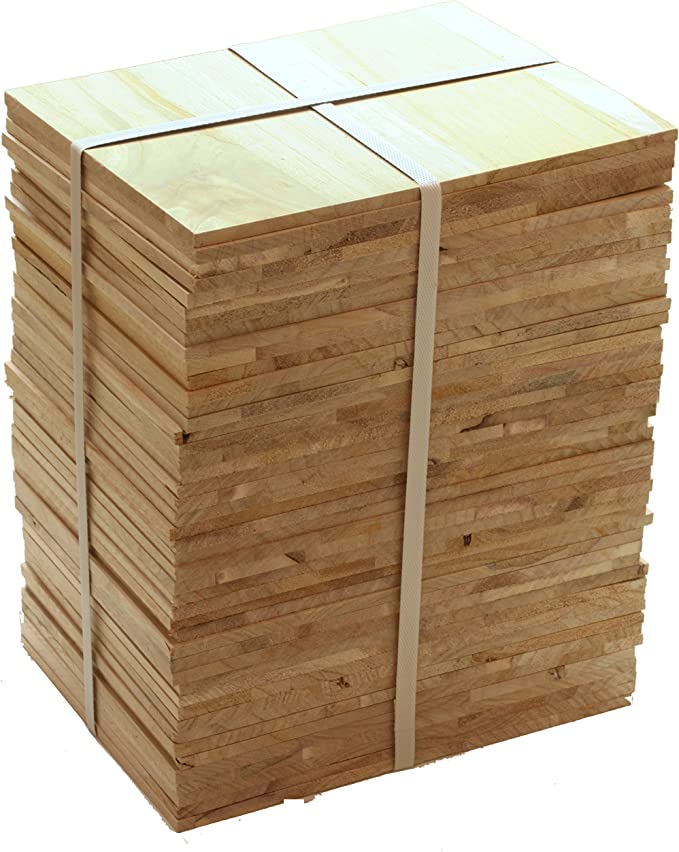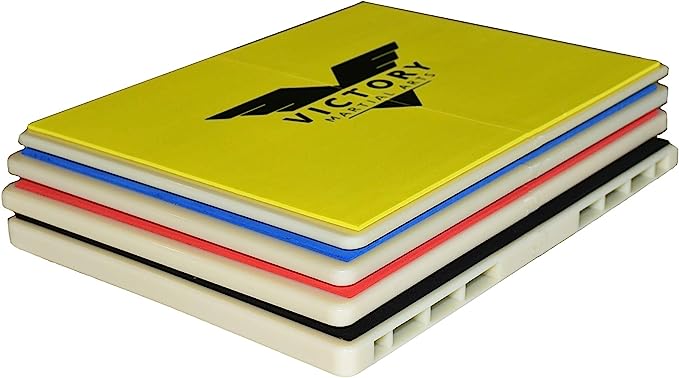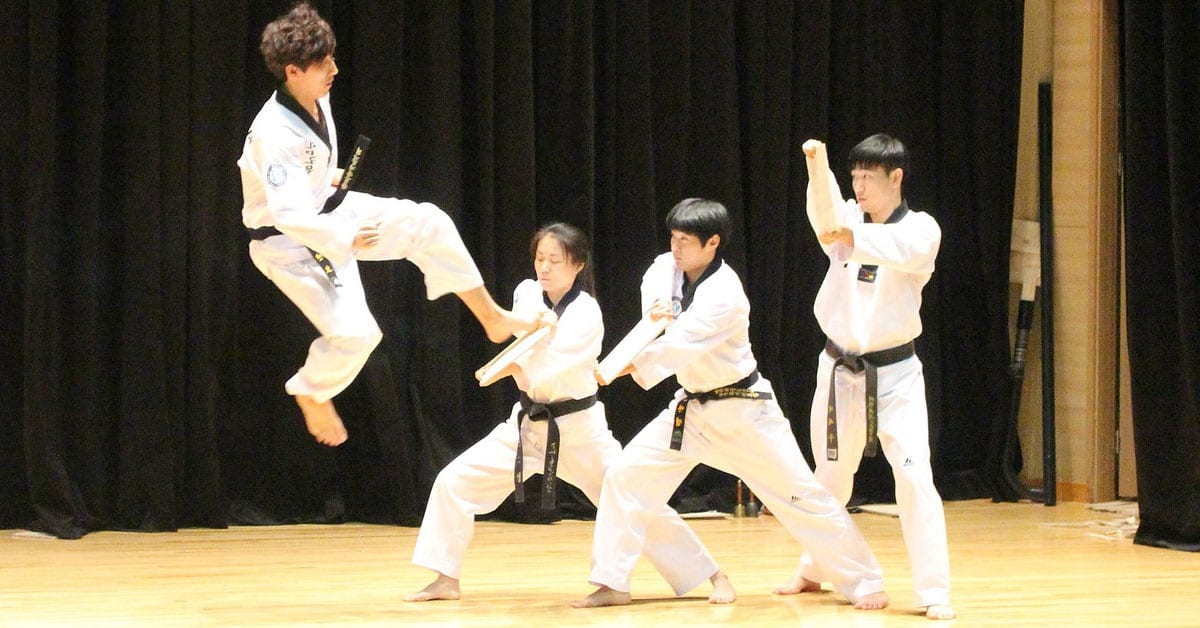There are few things as iconic about martial arts as the sight of masters of various disciplines breaking wooden boards with their strikes. Taekwondo is one of the martial arts which practices this feat most often, aside from karate and Pencak Silat. It is an amazing demonstration of power and technique, and it might be as old as the martial arts that train it. Taekwondo also has some of the most jaw-dropping board breaking demonstrations since the art itself is insanely acrobatic and awesome to watch with all its high kicks and spinning strikes. In this article, we will explore the world of Taekwondo board breaking.
Breaking boards in Taekwondo can range from very easy to very difficult and challenging, depending on the technique needed to be executed and the thickness and the material of the board used, and it is generally done with powerful strikes of the hand or legs, sometimes other parts of the body.
There is a lot to breaking boards in taekwondo. It has a whole history of its own, and also different uses and applications. In this article, we will be discussing the reason behind this activity, some tips on how it is done, and we will also recommend a couple of boards you can order now if you want to start practicing or if you are just looking for boards to hone your already existing skills on.
Why Do We Break Boards in Taekwondo?
Imagine a situation where an average person, who might have never heard about different martial arts and the practices they do, walks into a gym and is greeted by fierce-looking individuals dressed in funny clothes, aggressively breaking wooden or plastic boards, or perhaps bricks. Now, whether the individual runs out of the gym in fear or not, the question in his or her head will still remain: what are they doing, and why?
There are a number of different answers to this question since this practice serves and has always served multiple goals. In this section of our article, we will try to go through some of the most important aspects of them, to help you understand more about this old and intriguing tradition.
The first one has to do with conditioning the given body part. Arguably one of the most important and primary reasons board breaking was developed was as a way to strengthen the bones, skin, and joints on the given striking body part. As scientific research has shown, damaging and injuring bones and skin tissue has a similar effect as creating micro-tearing in the muscle fibers (aka working out), which is to strengthen the damaged body part. Bone density increases with constant damage, and with the skin thickening as well, practitioners of these martial arts will be able to strike a lot harder than the average person, since the potential for damage and pain is smaller.
The second reason why planks and boards are broken in various martial arts is, of course, a test of power and technique. There is an object called a makiwara, which is basically the Eastern, martial arts version of a boxing bag. It is a wooden stand with a striking surface on it, which is usually made of rice straw (traditional) or rubber foam (modern). It is used to test the strength and technique of the striker. However, when testing the power of a strike, boards are more effective for one simple reason: if the strike is strong enough, they break, and if they are not, they don’t. You can go up to a makiwara and deliver a strike with perfect technique but not with enough strength, and you might get away with it in front of your master or a crowd. However, not breaking a board is a sure sign that either your power or your technique is not on point, and there is no way around it.
Another important reason for developing the practice of board breaking was as a means of demonstrating the art’s power. Demonstrating, unfortunately, often was a way of showcasing the superiority of one art over the other, so there were quite frequent shows which were organized purely as a demonstration of how much better art x was than art y. However, this made up only a small percentage of the reason.
With demonstrating, however, there came another benefit, and that was marketing. There are various reasons people want more and more students in their dojo. It can be filling a financial goal or need, growing the name of the dojo and the base of potential champions, or also perhaps to draw in people who could one day take over the dojo itself. For whatever reason, most dojos like to advertise themselves, and one of the best ways karate dojos or TKD dojos can advertise themselves is by putting up a show, by demonstrating incredible feats of power, technique, and skill.
This can be done by organizing kata demonstrations with heaps of people, competitions, or just sparring in public places, however, most probably none of these will have the same shocking effect as a demonstration of board-breaking can have. Not only do the students have to perform the movements with great technique, but they also need power and courage. They need to have the ability to go into the movement regardless of the fear of potentially hurting their hands. Together, the techniques, the strength, the sound, and the sight of the board breaking adds up to a true sight to behold for potential martial arts students, and might just draw them in to train.
Are Taekwondo Boards Easy to Break?
Punching or kicking a wooden or plastic board with full strength, with a full intention to break it through, might seem like a really daunting thing to do. After all, our hands are quite soft if untrained, and wooden boards can be really, really tough. So, how easy is it to break boards in Taekwondo? It is hard to judge by just watching videos since the pros really make it seem easy.
Well, the difficulty of breaking boards can vary, depending on a couple of factors. These are :
- The type of board used
- The thickness of the board used
- The number of boards used
In this segment of today’s piece, we will briefly go through each of these factors that determine board-breaking difficulty.
There are a couple of different types of boards that TKD practitioners use to perform their board-breaking demonstrations and competitions, and the material does have a large effect on the difficulty of breaking it. The most traditional material that the boards are made of is wood, more specifically pine wood or sometimes Paulownia. The reason these boards are used is that they are brittle and hard enough to act as a proper resistance, but they aren’t as tough and sturdy as oak would be, which would shatter people’s hands.
Other material boards can be made of is plastic. Plastic boards tend to be re-breakable, and that is why people love them. When buying a 12 pack or more of pinewood, you shatter them in about 2 minutes and you can throw away what you are left with. However, with plastic breaking boards, you can break a board and then put it back together, which means that getting one plastic board is enough for weeks, months, or even years of training. These are considered unprofessional though, and also untraditional, which is the main reason why people don’t use them in any official setting.
There is a third category of board material, which is a broad and interesting category, but the smallest one. This is the group that contains all the other materials used, and these range all the way from glass to things like metal, bricks, and cement blocks. These are the more dangerous materials to use, and they are usually used by professionals in large settings, for special events.
The next main factor which determines how hard it is to break boards is the thickness of the board. The thickness of the board used varies depending on the skill level and age of the martial artist. The standard wooden board used in breaking is 1-inch thick, however, there are also half-inch boards for younger students, and also some boards up to 2-inches thick, for advanced demonstration purposes.
The last, somewhat trivial detail we must point out, is that the number of boards to be broken determines the difficulty of the process as well. At higher-level demonstrations, it is quite common to see multiple boards (sometimes up to 5 or 6) being used. This is mostly a demonstration of power, however, technique and confidence are also required to pass through all the boards successfully.
Taekwondo Techniques and Tips for Breaking Boards
There are many ways Taekwondo practitioners break boards. Out of the hundreds of techniques in Taekwondo and the even more ways in which those can be strung together, there are many strikes and combinations that can end with a board being broken. In this section of the article, we will talk about some of the most common moves used to break boards in Taekwondo, and also a couple of tips on how to do it more efficiently and effectively.
1. Front Kick – Ap Chagi
This is one of the most basic kicks in Taekwondo, probably the first one taught in a majority of all TKD schools. It is really simple, and one of the easiest to grasp, but it can also be devastating if learned properly.
It is performed by raising one’s knee (for ease of explanation, it doesn’t really matter which leg it is) high, in front of the chest almost, and then with toes stretched backward, the leg is extended in a snapping motion forward. In a majority of cases, this is used as a way to keep the opponent at a distance and also to push them away, but it can also be powerful enough to end fights and cause injury.
The Ap Chagi is also used to break boards and is often one of the first moves to be demonstrated, as a warm-up to the more complicated and acrobatic kicks that are to follow. Even though it is simple and easy to understand, the fact that it can break boards stands as testimony to its power. Furthermore, it is also a skill on its own to not lose balance, injure the toes, and still break the board.
2. Axe Kick – Naeryeo Chagi
One of the more popular kicks, the axe kick is one of the most interesting and also dangerous kicks in Taekwondo and in martial arts in general. It is more advanced, since the technique, the power, and the flexibility needed to perform this kick are usually not held by a beginner student.
This technique is performed by bringing a leg up either from the side, almost like a crescent kick, but when the leg reaches a full extension at the top of the curve, the heel is forcefully brought down upon the opponent. This kick is usually aimed at the head, nose, chest, or the collar bone, the latter of which is one of the most frequent bones broken by this kick. The axe kick is great at getting behind the guards of the opponent, and also has an element of surprise to it.
This kick is one of the harder ones to break boards with, seeing as it is more technical than many simpler kicks in TKD. The practitioner needs to aim properly not only to gauge the distance right but also to not miss the target due to too much momentum on the chambering of the kick.
3. Tips on Board-Breaking
One of the most important tips we can give, and which is also iterated thousands of times by masters and coaches alike. It is the importance of striking through the board instead of just striking the board. Basically, this means you should aim for 2-3 inches behind the board when striking. The reason why this is important is that your body adjusts and moves the way you first intend. By this, we mean that if you are striking at the board, your body will start to slow down, clench up and start pulling back as you are nearing the board. If you aim behind it, however, the momentum isn’t going to slow down until after the breakage happens, thus ensuring success.
Another tip is to concentrate and be confident. Oftentimes, you will perform such movements in front of an audience or at least a few people. Try practicing mindfulness and focus meditation to help you with getting distracted and fazed out by the crowd.
Also, warm up all the joints in your hands or whichever body part you are going to strike with. You can also spend extra time at home to strengthen your joints and increase their flexibility. Though board breaking isn’t dangerous, it can lead to joint injury or bone fracture, so make sure you prepare well for the event.
Best Breaking Board for Taekwondo – Best Overall
Tiger Claw Wood Breaking Board
These boards are crafted from lightweight laminated real wood called Paulownia, offering a safe and easy way to practice breaking techniques. Board breaking is not only a powerful demonstration of skill, but also a means to develop confidence, precision, and power in martial arts. The Tiger Claw Wood Breaking Boards are constructed to ensure safety during breaking practice. They are specifically engineered to break easily, allowing you to focus on technique rather than struggling with overly resistant boards. Check them out if you are planning on organizing an event in your dojo for multiple people, or if you just want to practice and hone your own skills.

Pros
- Lightweight and easy to handle
- Sturdiness and overall quality
- Challenging enough for martial arts training
- Smaller pack if you need a small quantity instead of bulk orders
Cons
- A bit expensive compared to other options
- Too difficult to break for children
To finish our article, we will include two breaking boards, one of which we deemed to be the best overall, while the other one is a budget pick for the ones not wanting to invest a lot into board-breaking.
Our pick for the best board overall is the Tiger Claw Wood Breaking Board. You can order them in different sets of different thicknesses, which makes it suitable for all different types of practitioners. It is also made of Paulownia, the second most popular wood used for this purpose, and also one of the most similar to pine.
Best Breaking Board for Taekwondo – Budget Pick
Rebreakable Board by Victory Martial Arts
These rebreakable karate boards are designed to enhance your martial arts skills while providing convenience. Crafted with high impact molded plastic, they are built to withstand powerful strikes. The rubber padding on both sides ensures a secure grip for the holder, allowing for precise and controlled breaks. The Rebreakable Board offers easy reusability, allowing you to break it, slide it back together, and break it again. The board progression system includes yellow, blue, red, and black boards: you can match the thickness of the board with your belt level to ensure an appropriate challenge. Featuring the Victory Martial Arts logo, these boards make it easy to aim for the center and improve your accuracy.

Pros
- Realistic practice experience for breaking real wood boards, helping to prepare for martial arts tests and tournaments
- Sturdy and comparable to other well-known brands in terms of quality and performance
- Allowes for home practice and saves money compared to using real boards
- Suitable for kids
Cons
- May weaken or crack after a short period of use
- Foam padding is thin
For the budget pick, we chose the optimal product which will save you tons of money on board-breaking in the future, and that is the Rebreakable Board by Victory Martial Arts. Though the price tag of the two products is quite close to one another, this rebreakable board will last you a longer time than 3 of the other packages combined.
Plastic boards are in no way traditional, nor beloved by many masters of the traditional TKD. However, there is no doubt they are useful and practical. You can pay one pretty low price for a board, and then get to rebreak it dozens of times until you possibly damage it. If you are looking for an option that will deliver maximum efficiency, check out this product here on Amazon! They also have different thicknesses, so don’t be afraid to experiment!

